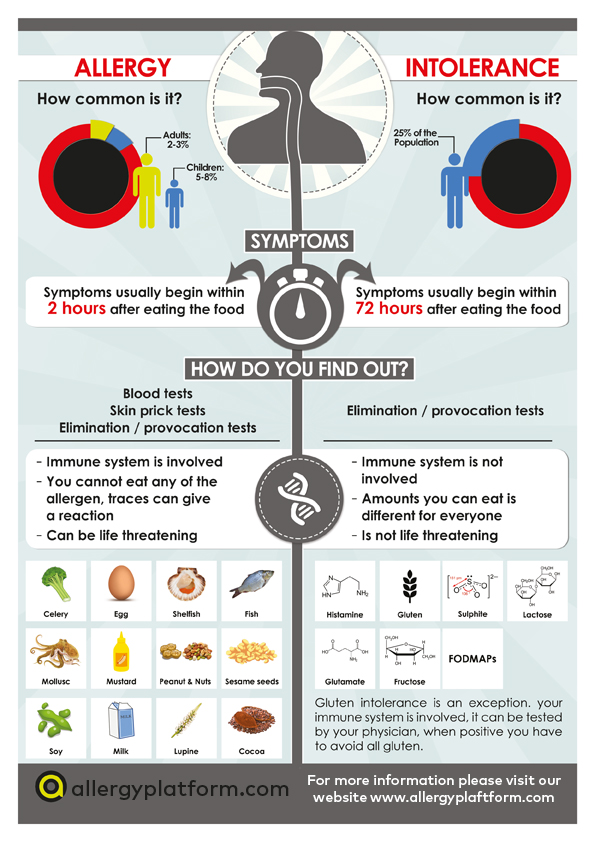
Food allergy is the well known term for allergic reactions to food. It is used for allergies as well as intolerances but they are two complety different syndromes.
An allergy is an abnormal response of the immune system to proteins. A food allergy happens when your immune system mistakes something in food as harmful and attacks it.
The infographic on the right can be downloaded in high quality (so you can print them) for health professionals to use in their practice. Please visit this page for the download.
Food intolerance
In non-allergic food hypersensitivity body reacts to certain foods. The immune system so, however, plays no or an insignificant role.
Symptoms
Commons symptoms are:
- Vomiting
- Stomach cramps
- Hives
- Wheezing
- Repetitive cough
- Shock or circulatory collapse
- Throat and swelling of the tongue
- Weak pulse
- Pale coloring of skin
- Feeling faint
- Anaphylaxis
Main sources of allergies
While any food can cause an adverse reaction, eight types of food account for about 90 percent of all reactions:
- Eggs
- Milk
- Peanuts
- Tree nuts
- Fish
- Shellfish
- Wheat
- Soy
Dietitian
If you or your child has a number of symptoms that may indicate an allergy or intolerance, we advise you to contact your pediatrician, family doctor or health clinic. If it is indeed an allergy or intolerance is useful to get in contact with a dietitian. They can help you make the right choices and give tips on nutrition.

